The first step in any new building project is scribbling out plans and considering many possibilities for size and location. At first, I envisioned a huge garden bed divided into smaller parcels for individuals to grow in. However, as I was planning this build, I realized that building a 20×20 ft garden bed with a wooden edge would be too much weight and pressure for the lumber. After many drafts, I decided the amount and size of the gardens we would build, and in the end, we built 8 (~6-inch tall) gardens; this design – which is shorter than the other Community Gardens – will use significantly less soil than a taller box. Also, the roots of vegetable plants are all relatively shallow, and 6 inches of soil will be plenty of room for them to grow. I chose to do 8×4 ft boxes because I knew these would be manageable sizes of lumber to get and work with. Now, I had to find a place to get affordable lumber.
I’ve got a friend who has a sawmill and often has edge pieces and offcuts of cedar that are inexpensive to buy. I took a trip to his place in early May, borrowed a friend’s truck and spent about $90 on the lumber for this project.
Next, I brought all the lumber home and cut it into the sizes we needed to build the garden. One downfall of buying discounted lumber is that it’s usually not cut to the sizes that you want, so there’s more labour involved than buying from the hardware store.
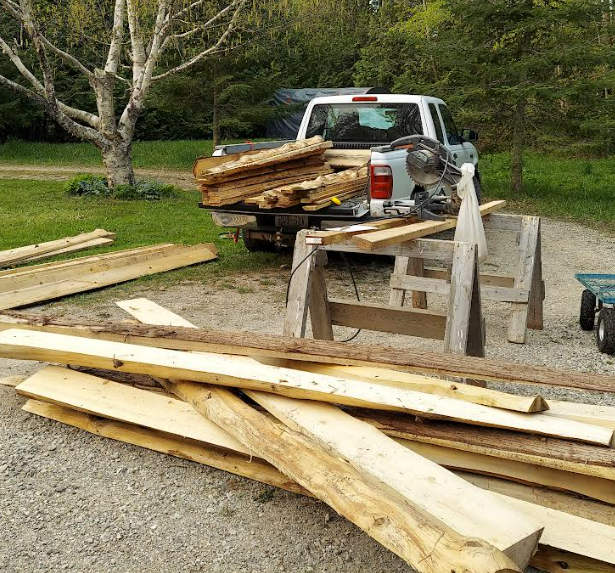
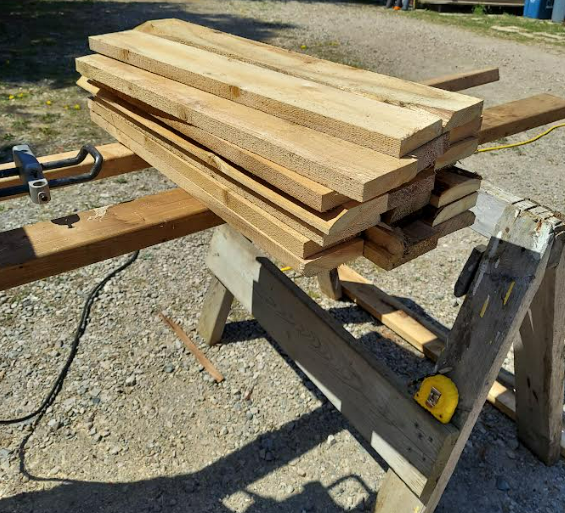
Next, we had to build the gardens, so we decided on a time to gather. I brought my drill and some long weather-resistant screws, and we got to work. We laid down a thick layer of cardboard before adding the underneath the garden boxes before adding soil. This will help to keep grass and other weeds from growing up into the garden!
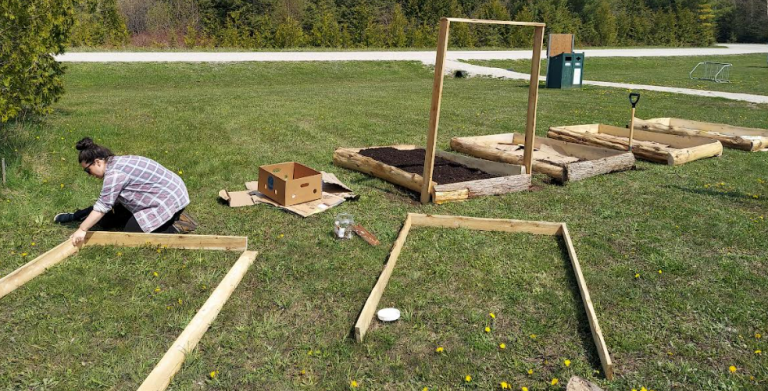
Now we needed to fill the gardens with soil! Our local garden center offered two options: topsoil or triple mix. Since we live in a part of the world with rare and precious plant species, I wanted to be very careful not to bring in seeds of plants that might become invasive. I asked the garden centre which soil options were heat treated, as this would kill any unintended seeds in the soil. Turns out the triple mix was best for this, so I visited the garden centre to look at the soil quality of the triple mix. It appeared to be light and fluffy in texture, and I knew it would be best to add some organic matter to the soil in the gardens. For this reason, I brought in a truckload of leaf compost to increase the organic matter and nutrient profile of the soil. Ultimately, our ratio was about two parts triple mix to one part leaf compost.
We spent the day moving soil using wheelbarrows and shovels to all eight garden beds. Then, we built trellises from the garden to grow climbing vegetables, such as tomatoes, cucumbers, peas and beans. Then, we laid down a heavy-duty landscaping fabric, which will eliminate the need to mow in these areas and keep the grass from growing into the gardens.
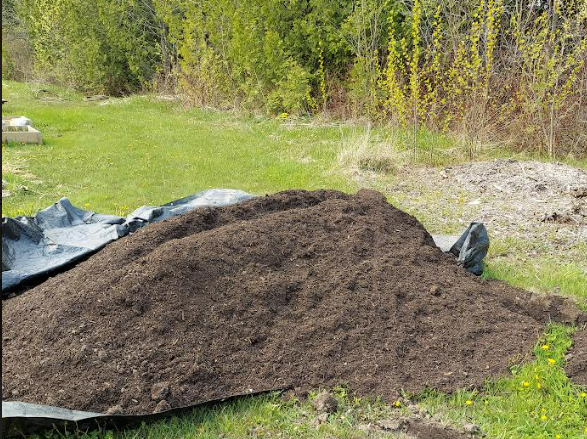
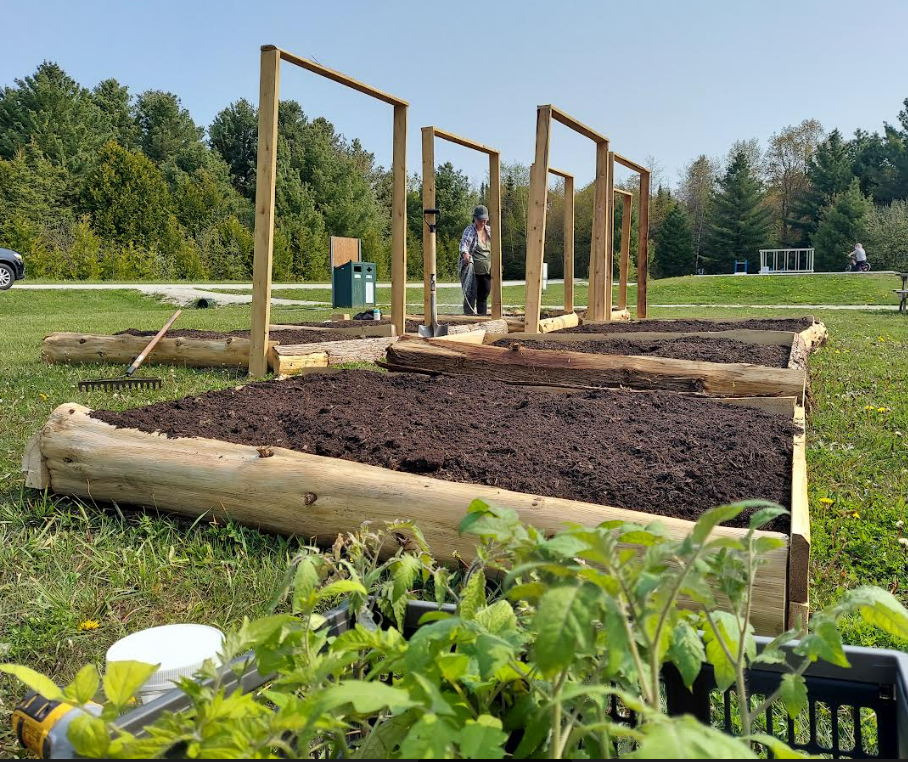
We’re ready to plant!
I purchased organic seeds from a farm in Mount Forest called Hawthorn Farm. If you can, it’s good to choose organic seeds because they will be free of pesticides -such as neonicotinoids- that can be harmful to pollinators and other insects that are friends in the garden. Organic seeds are grown with organic practices, so if you plan on using organic practices (manure and compost instead of synthetic fertilizers and companion planting instead of pesticides), organic seeds will perform the best. Further, seeds from local producers have often been selected based on local environmental factors such as soil type and climate.
In early May, it’s safe to plant cold-tolerant crops. These plants don’t mind frost and won’t be negatively impacted by the freezing temperatures at night. Some cold-tolerant crops include kale, spinach, peas, beets, carrots, radishes, parsley and turnips.
In addition to the organic seeds, I purchased several starting plants from a local farm called The Greenery. In our climate, it’s important for some crops -like tomatoes and eggplants- to have a head start on the season and be started indoors and then moved outside once the risk of frost has passed. In our region, June 1st is generally a safe time to plant cold-sensitive crops. It was around this time that we transplanted the tomatoes and planted seeds such as zucchini, squash and cucumber.
Now that all the seeds have started and plants are in the ground, it’s time to water everything thoroughly and wait to see how things grow.
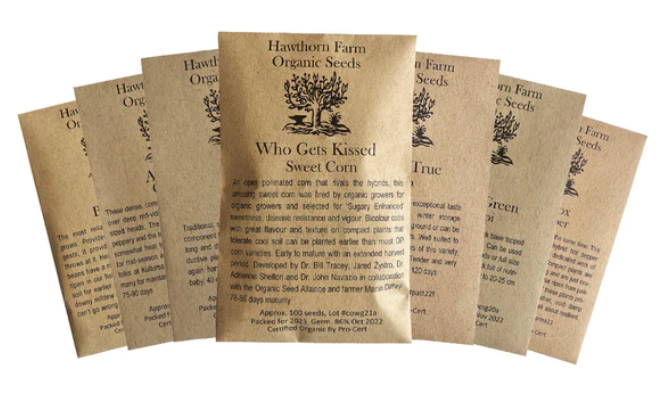
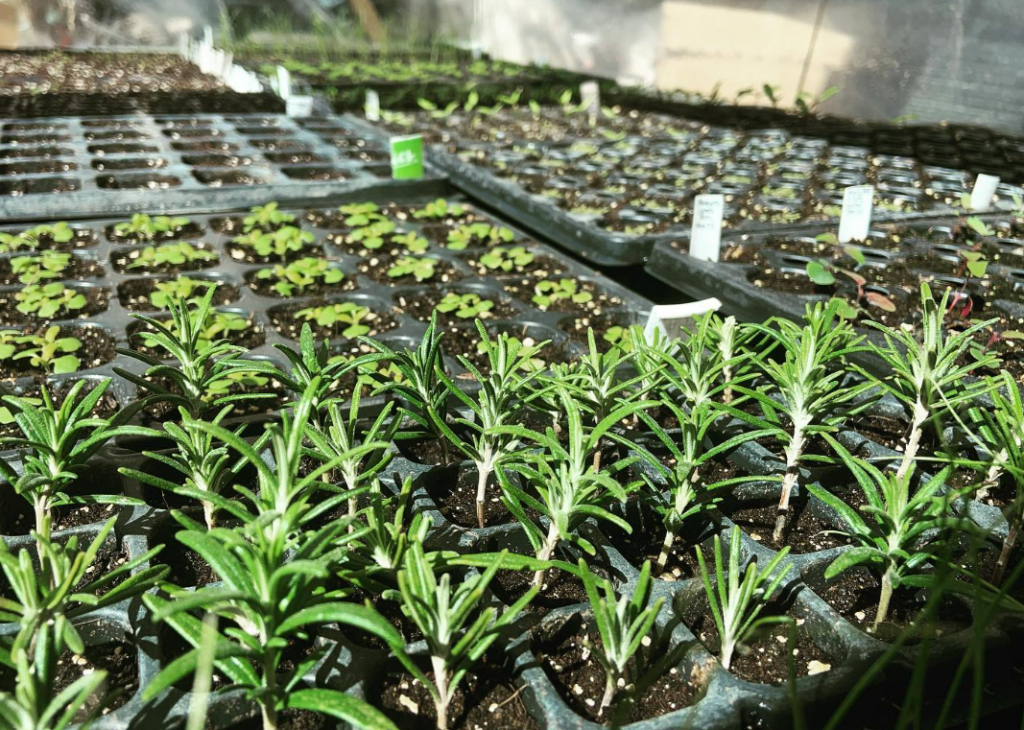
This phase in the garden project was made possible by contributions from:
Peninsula Our of Doors – Thanks for offering us free delivery of the triple mix!
&
Miller’s Family Camp – Thanks for allowing us to use their truck to transport Leaf compost from their leaf pile!
